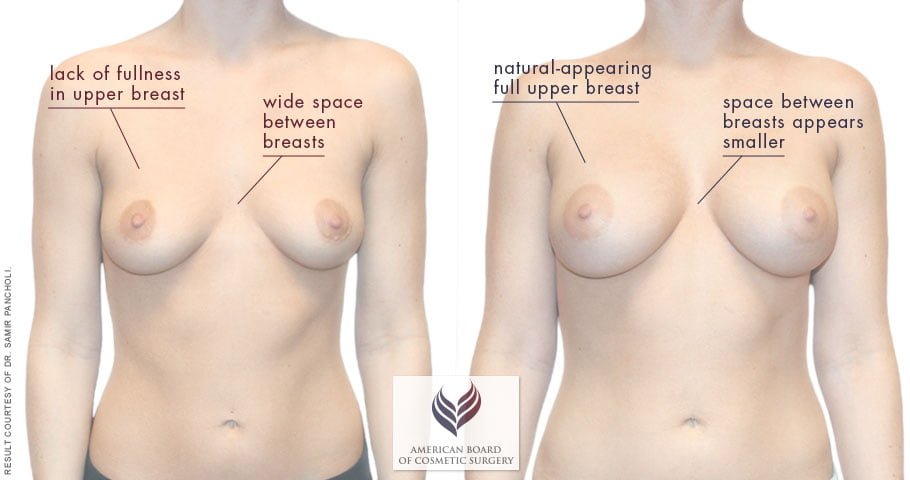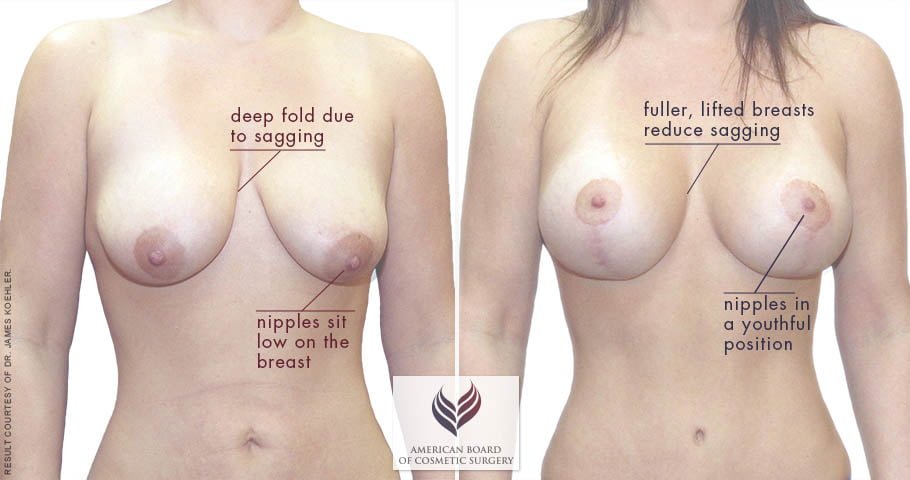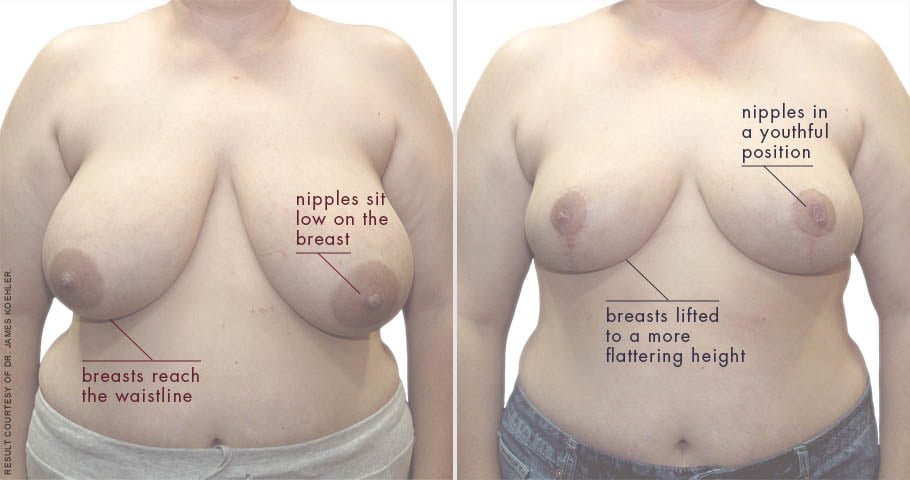Tips for Getting the Most Out of Breast Before & After Photos
| ABCSIn addition to credentials, training, and experience, did you know that before and after photos are an important part of choosing your surgeon? Not only is this a good way to see the quality of a surgeon’s work, it is also an opportunity to begin visualizing your own results.
To get the most out of viewing before and after photos, it’s important to understand what to look for and how to compare results. Following are pro tips for viewing photos of breast enhancement surgeries, such as breast augmentation, breast lift, or breast reduction.
- Start with Before Images that Match You
- Next, Look for Breast Enhancement Results You Love
- Review After Images Like a Pro
- Understanding New vs. Final Results
- Ask the Surgeon!
Start with Before Images that Match You
When you arrive at a cosmetic surgeon’s online before and after gallery, the first step is to look for “before” images that are relevant to you. Look for patients with a similar body type who also had the same concerns as you, such as small breasts, tubular (“snoopy”) breasts, or a matching degree of sagging.
While every patient’s results are unique, viewing before and after photos of patients whose natural anatomy is similar to yours can help you:
- See which procedures may give you the results you desire
- Understand what to realistically expect from a specific procedure
- Visualize how certain options may look on your body
Not seeing anyone like you in local surgeons’ online photo galleries?
Schedule a few in-person consultations with reputable cosmetic surgeons and they will be sure to have many more patient photos in their office (not all patients give permission to show their photos online). In consultation, you’ll have the advantage of having experts sort out which patient photos match your concerns and goals.
Next, Look for Breast Enhancement Results You Love
For breast enhancement, before and after photos can be especially helpful in understanding how different procedures improve breast appearance. Like women, breasts come in all shapes and sizes, there is no standard “perfect” breast, and ideal results can be unique to each patient. However, there are certain qualities that successful breast enhancement procedures have in common.
Breast Augmentation
- Improved symmetry and proportion
- Pleasing shape and contour
- Increased fullness in breast

Breast augmentation patient
Breast Lift
- Improved symmetry and proportion
- Restored fullness in the upper breast
- Reduced sagging and a more appealing breast shape
- Fuller, more youthful interior and side breast contour

Breast lift with augmentation using the lollipop technique
Breast Reduction
- Improved symmetry and proportion
- Noticeably smaller breast volume
- Pleasing nipple position
- Evenly shaped areolas
- Breasts lifted to a more flattering height

Breast reduction patient
Although looking at before and after pictures are helpful as a guide to what a surgeon typically produces as an end result, it is important to realize that everyone is different and one must take into account differences in every patient’s natural anatomy. Anatomical factors that can affect the appearance of breast enhancement surgery include:
- Rib cage contour and shape (this is what the implants lie on)
- The amount of natural breast tissue
- The type of breast tissue (loose or shaped)
- Skin tightness (weight loss and pregnancy can cause the breast to stretch of change shape quickly over time)
Review After Images Like a Pro
Before and after photos can also help you see and understand what results you don’t want. For breast enhancement procedures, be sure to pay attention to:
- Bottoming out or “double bubble”—you may see that some patients have an uneven curve below the nipple line in the side view. The implants should imperceptible and naturally transition into the curve of the breast. Tip: look at the side and oblique views of patients to check for bottoming out.
- Symmastia or “bread loafing”—if the breasts don’t have a natural-looking valley between them, it could indicate that the implants were not placed ideally for the patient’s breasts and body type. Tip: look at the frontal views of patients to assess implant placement.
- Implant rippling—this may not always be easy to spot in an image, but you should not be able to see the edge of a breast implant. This is common in smaller patients with low body fat, but can often be avoided by choosing the most appropriate breast implant and placement options for thinner patients. Tip: look at side views of patients to check for rippling.
- Breast asymmetry—while perfect symmetry can not be expected, breast enhancement procedures can help mismatched breasts become more similar in shape and size. If the patient had very balanced breasts before surgery, the results should be similarly symmetrical. Tip: look at the frontal views of patients to assess symmetry.
- Nipple placement—if nipple placement was adjusted during a breast lift or breast reduction procedure, the nipple should look youthful but natural. This means the nipple should point out or slightly upward, and the areola should be located just below the midway point of the breast. Tip: look at side views of patients to assess nipple placement.
It’s important to remember that both surgeons and patients work closely together to determine which options will best provide the results a patient is looking for. If an “after” image does not meet your personal aesthetic goals, the results may still meet the express wishes of that individual patient. If you have questions about a specific result, ask the surgeon!
Understanding New vs. Final Results
It’s important to take into account results that aren’t yet final. Many after photos are taken within the first few weeks after surgery during follow-up appointments, but it can take up to a year for final results to show for certain procedures!
Breast augmentation: Depending on how an implant is placed, whether saline or silicone is chosen, and a patient’s natural anatomy, breast implants can take between 6 months to a year to fully settle into position. This means that after photos taken earlier in the recovery period may show breasts that are high on the chest, firm in appearance, and have exaggerated fullness in the upper pole of the breast.
Breast lift: Like breast augmentation, breast lift final results can take up to six months to appear. Before the body is fully healed, swelling may affect the appearance of breast shape and contour. Additionally, scarring will be more evident during the first few months after surgery.
Breast reduction: It’s best to look at breast reduction results that were taken from six months up to two years postoperatively. Prior to six months, breast swelling may cause temporary breast asymmetry and can hide the true reduction in breast size. Scars will fade over the course of a year; if you are looking at a result that is only weeks or a few months out, the scars are likely to be red and it can be harder to judge the quality of the incision placement.
Before letting an after image impact your opinion of a result, make sure you’re looking at a fully-healed patient. Often the patient story in the gallery will indicate the amount of time that has passed since surgery. You can even contact the surgeon to see if the office has before and after photos that better show the long-term results of the same patients, or other patients that match you and have photos further out from surgery.
Ask the Surgeon!
If photos look odd or confusing to you, get in touch with the surgeon or practice! They may be able to provide more information on the patient’s unique circumstances and desired outcome.
If you would like more information, there is no harm in requesting it—contacting a surgeon or having an in-person consultation does not mean you must choose that surgeon for your operation. Most practices will be happy to answer your questions and will have a more comprehensive portfolio of before and after photos in their offices.
To find a board certified cosmetic surgeon in your area, use our Find a Surgeon tool.